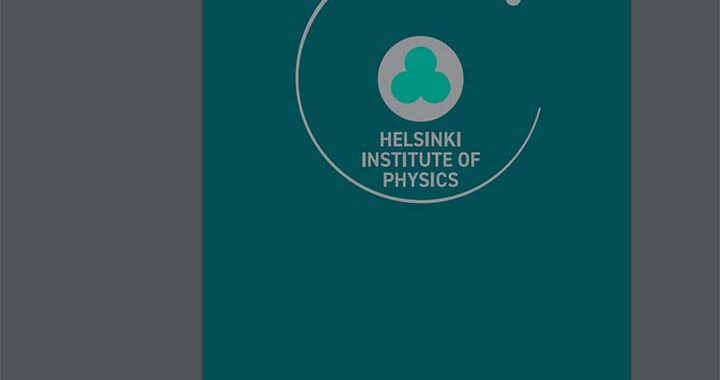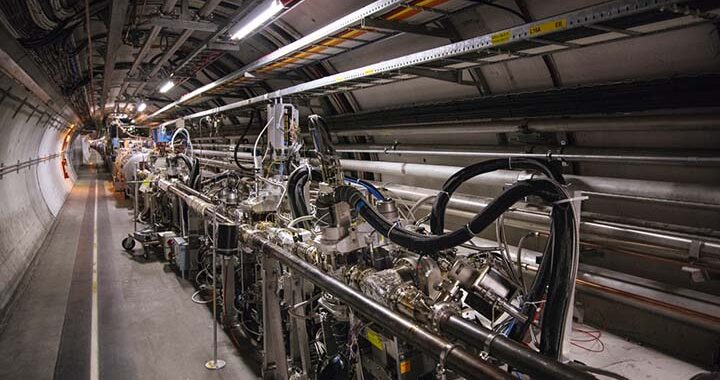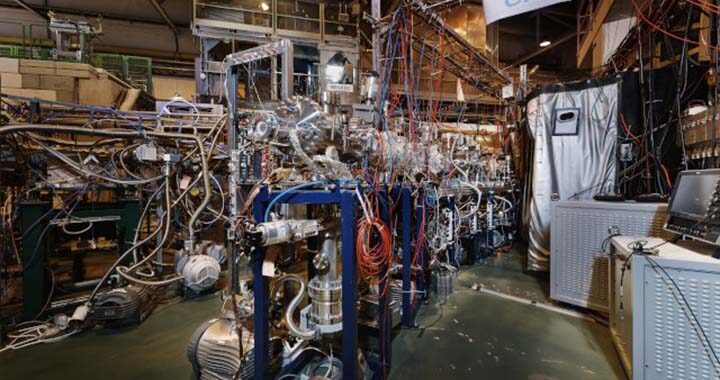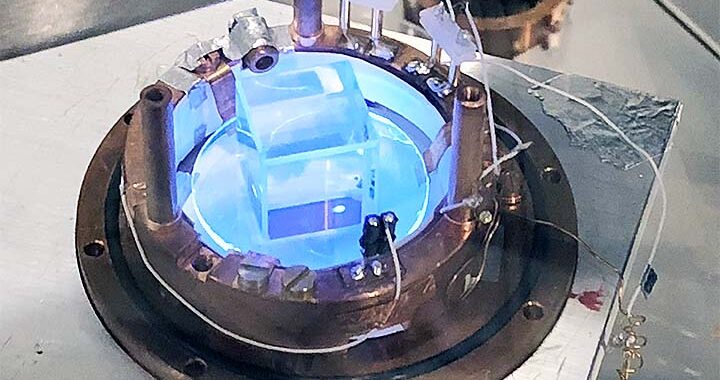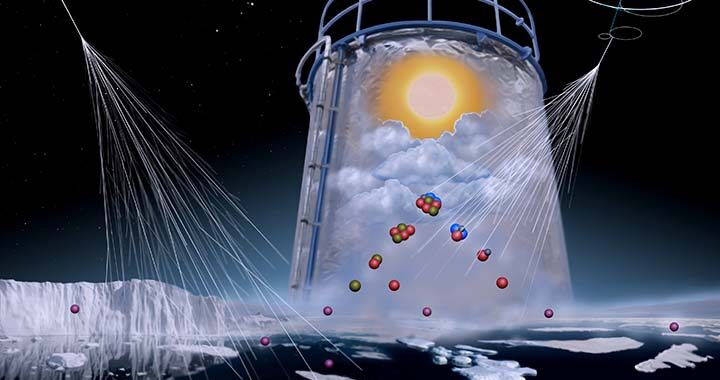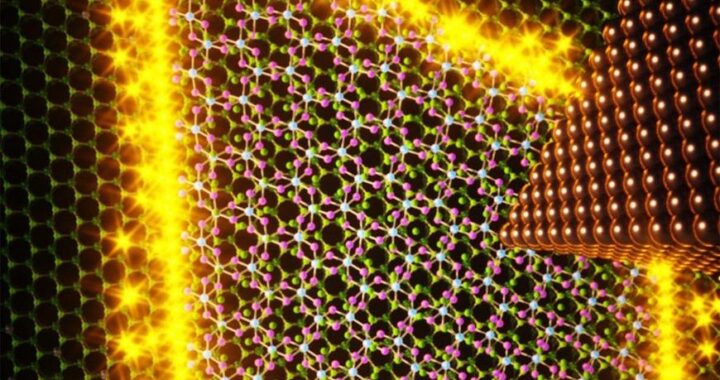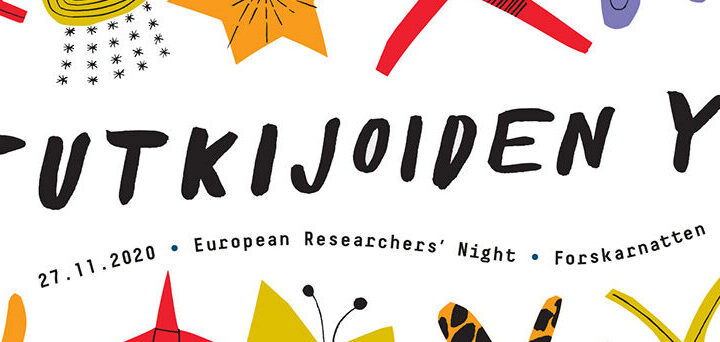For more information, please visit the DeNuSa project News.
Category Archives: Highlights
Successful installation of the CMS Pixel Tracker
“In early 2019 the CMS Phase-1 Pixel detector was extracted from the underground cavern after successful completion of the LHC Run 2 data taking campaign. Its sub-detectors, the Barrel Pixel (BPIX) and Forward Pixel (FPIX) detectors, were stored cool and dry in a clean room facility on the surface to protect the silicon sensors during the long shutdown (LS2) in 2019-2021. The detectors were refurbished and repaired during LS2 to improve the quality of the collected data and the operational stabiliy in the next period of the data taking (Run 3). At the end of June 2021, the detectors were installed in their habitual location inside the CMS detector.”
More information here.
HIP – Annual Report 2020
The Annual Report 2020 has been published.
Please see the online version here.
TOTEM and DØ collaborations announce odderon discovery
“The TOTEM collaboration at the LHC and the DØ collaboration at the Tevatron collider at Fermilab have discovered an elusive state of three gluons.”
More information:
https://www2.helsinki.fi/fi/uutiset/luonnontieteet/odderon-loytyi-lopultakin (in Finnish)
https://home.cern/news/news/physics/totem-and-do-collaborations-announce-odderon-discovery (CERN)
https://news.fnal.gov/2021/03/totem-and-do-collaborations-announce-odderon-discovery/ (Fermilab)
http://news.ku.edu/2021/03/16/ku-scientists-announce-odderon-observation-hunted-50-years-particle-physicists (The University of Kansas)
Top picture: “Part of the TOTEM installation in the LHC tunnel 220 m downstream from the CMS experiment (Image: CERN)”
Nature Physics: Charge radii of exotic potassium isotopes challenge nuclear structure theory
“In nuclear physics so-called magic number are such nuclear proton and/or neutron numbers, for which the nucleus is more stable compared to neighboring isotopes on the nuclear chart. Researchers in both experimental and theoretical nuclear physics from University of Jyväskylä, Finland, took part of international research team, which studied the nuclear charge radii of potassium isotopes. Isotopes were studied by using the collinear resonance ionization spectroscopy technique. The results indicated that the potassium isotope with a neutron number of 32 does not conform with criteria of magic neutron number. The results were published in Nature Physics journal on January 2021.”
More information here: Research News @ University of Jyväskylä
Top picture: “The measurements were made using the Collinear Resonance Ionization Spectroscopy technique at CERN, ISOLDE. Picture: CERN.”
Dark matter avoids detection – Finnish scientists join a new serch project
As a joint European effort, the COSINUS experiment will be constructed 1400 meters deep below the Gran Sasso massif to trace the hidden side of the universe, dark matter. Finnish scientist will take part in the theoretical analysis of the measurements.
Italian Gran Sasso-vuoren alle 1400 metrin syvyyteen on päätetty rakentaa yhteiseurooppalainen COSINUS-koelaitteisto jäljittämään maailmankaikkeuden kätkettyä puolta, pimeää ainetta. Suomalaiset tutkijat osallistuvat kokeiden tulosten teoreettiseen analyysiin.
Visit site cosinus.it for more information.
The top photo: The detector, consisting of a sodium iodide crystal, is cooled close to the absolute zero temperature (-273 °C). Credit: COSINUS/Karoline Schäffner.
Science publication by the CLOUD collaboration: “Role of iodine oxoacids in atmospheric aerosol nucleation”
The researchers at the University of Helsinki (INAR) and Helsinki Institute of Physics (HIP) have studied the role of iodine oxoacids in atmospheric aerosol nucleation.
- “CLOUD at CERN reveals the role of iodine acids in atmospheric aerosol formation”
- CLOUD Experiment @ HIP
- Link to the Science article
- “Ilmakehän jodi kiihdyttää pilvien muodostusta ja voi vaikuttaa ilmastoon”
The top figure: A schematic of the formation of clouds from iodine precursors in the Arctic and marine environments. Iodine species, emitted from the sea ice and sea surface, are rapidly photolyzed to form iodine oxoacids which form new particles and may grow to become new cloud condensation nuclei. Credit: Helen Cawley.
Topological superconductivity may boost new building blocks for quantum computers
“Researchers from Aalto University and Tampere University have observed compelling evidence on novel quantum phase of matter. This phase, known as topological superconductivity, supports exotic Majorana particles that may revolutionize future technologies. The discovery was published in Nature.”
More information here (in English):
Topologinen suprajohtavuus voi tarjota uusia rakennuspalikoita kvanttitietokoneisiin
“Aalto-yliopiston ja Tampereen yliopiston tutkijoiden yhteistyöprojektissa on saatu vakuuttavaa näyttöä uudenlaisesta aineen olomuodosta, topologisesta suprajohtavuudesta. Topologisilla suprajohteilla ja niiden sisältämillä Majorana-hiukkasilla voi olla keskeinen rooli tulevaisuuden kvanttitietokoneissa. Tutkimus julkaistiin arvovaltaisessa Nature-tiedelehdessä.”
Lisätietoa täältä (suomeksi):
Tutkijoiden yö – Researcher’s Night
Tutkijoiden yönä 27.11.2020 tapahtuu HIP:ssä / Researcher’s Night @ HIP
Alustava tapahtumaluettelo löytyy täältä.

